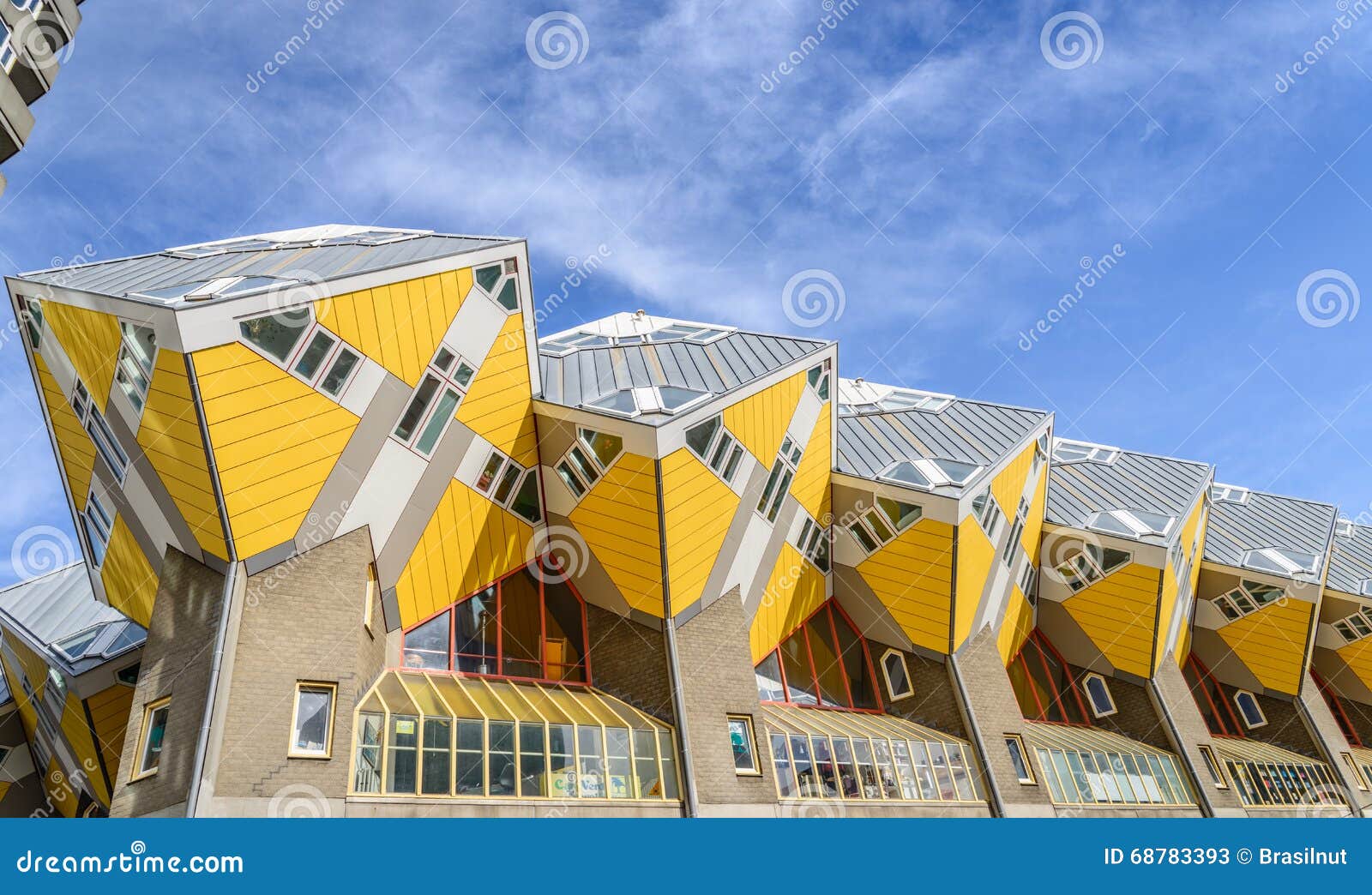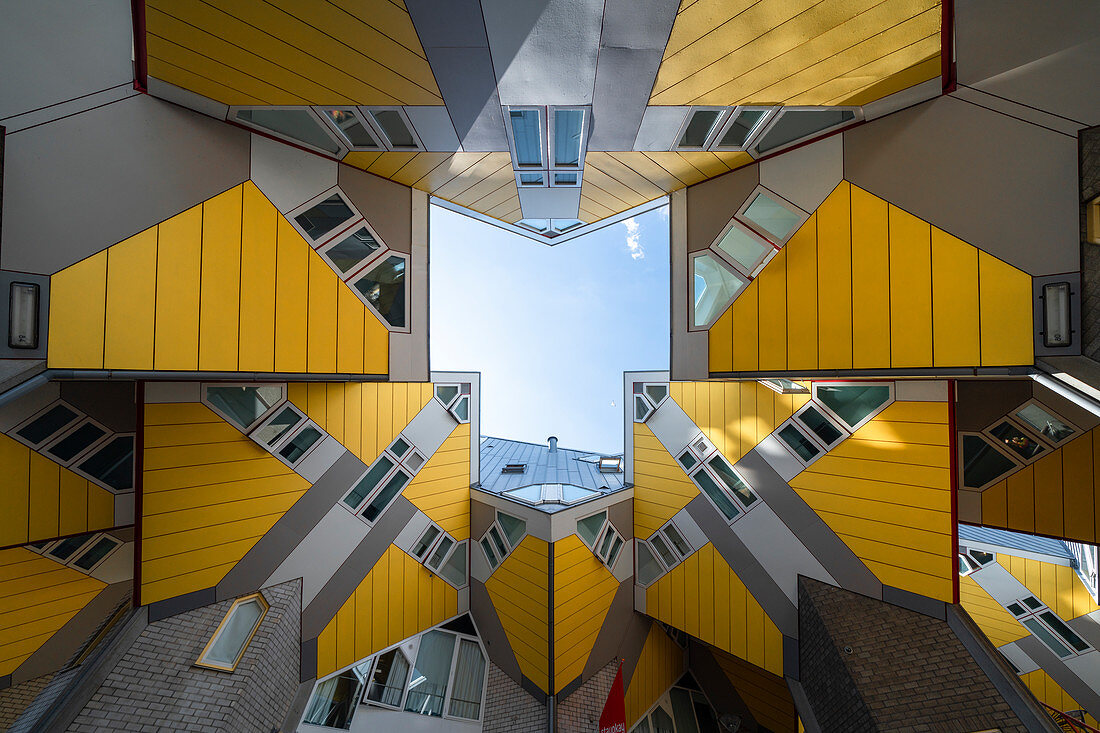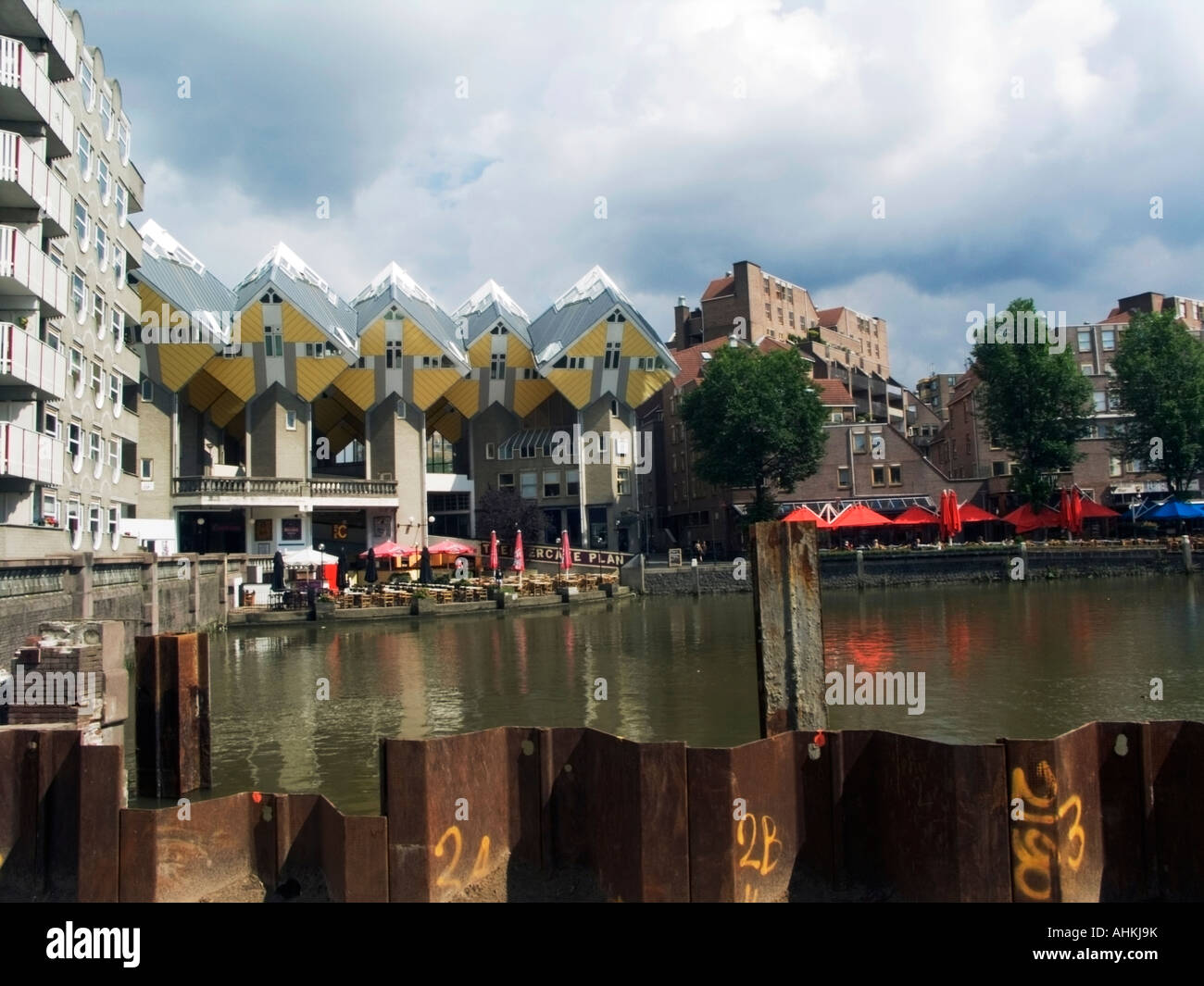
Cubic houses, Architect Piet Blom, Rotterdam, South Holland, Netherlands, Europe stock photo
Piet Blom, a Dutch architect, is renowned for his distinctive and imaginative designs that challenge conventional notions of urban architecture. He was born on February 8, 1934, in Amsterdam. Blom's career spanned several decades and left an indelible mark on the world of architecture.

Clássicos da Arquitetura Kubuswoningen (Casas Cubo) / Piet Blom ArchDaily Brasil
Pencillious The Blaaktoren (1984) in Rotterdam is a residential tower by architect Piet Blom. Also popular as the Potlood (Pencil) building in Rotterdam because of the pointy top. With a height of 61 meters and 15 floors the pentagonal Pencil is a radial structure.

Piet Blom _ Casas Cubo _ Rotterdam Arquitectos por ciudades
The cube houses in Rotterdam are not the first. Piet Blom, the architect had already built 18 cube houses in Helmond. He comes up with the idea of one of the residents who called at a meeting that we should live in the trees again. He came up with names for the levels in the cube: street house (living room and dining room), celestial house.

Casas Cubo Piet Blom Rotterdam WikiArquitectura_02 WikiArquitectura
Published October 27, 2011 Updated November 8, 2023 Inside the fascinatingly curious Cube Houses of Rotterdam. The Cubic Houses are a curious and magnificent architectural wonder located in Rotterdam, Netherlands. They were conceived and constructed by architect Piet Blom in the 1970s.

Rotterdam, Netherlands 16 July, 2016 The Cube Houses (Kubuswoningen) at Rotterdam. Dutch
Here are 15 detailed reasons why the Cube Houses are unequivocally one of the best places to explore in Rotterdam. 15 Quirky Reasons to Dive into Architectural Wonderland! 1) Iconic Architectural Marvel The Cube Houses, designed by architect Piet Blom, are an icon of Rotterdam's skyline. These tilted cubes, seemingly defying gravity, capture.

Cube Houses Designed by Piet Blom Editorial Stock Photo Image of netherlands, attraction 68783393
8 Mins Read. Kubuswoningen by Piet Blom - After the 1940 bombing of the Oude Haven port, urban regeneration and housing became the priority in Rotterdam. With the objective of "architecture with life" instead of utilitarian architecture, the city planners approached Piet Blom to apply for his Cube housing in Helmond to a more urban context.

Kubuswoningen, Rotterdam architect Piet Blom Lighthouse Productions / Fotograaf Dirk
Rotterdam's Cube Houses, an iconic building designed in 1984 by Dutch architect Piet Blom, has been renewed and transformed into a new Stayokay hostel.The building consists in 38 small cubes and.

Cube Houses of Rotterdam, Netherlands Piet Blom [600x349] r/ArchitecturePorn
Piet Blom ( Dutch pronunciation: [ˈpid ˈblɔm]; [1] February 8, 1934, Amsterdam - June 8, 1999, Denmark) was a Dutch architect best known for his 'Kubuswoningen' ( cube houses) built in Helmond in the mid-1970s and in Rotterdam in the early 1980s. He studied at the Amsterdam Academy of Building-Arts as a student of Aldo van Eyck .

Cube houses by architect Piet Blom in … License image 71331506 Image Professionals
The Rotterdam Blitz; Part of the German invasion of the Netherlands: Rotterdam's city centre after the bombing. The heavily. The Maritime Museum blocks the Window to the River, and Piet Blom's Cube Houses create another barrier between the city and the river, where in the Basisplan there was to be a connection between them. The Euromast.

THE CUBE HOUSES DESIGNED BY PIET BLOM IN ROTTERDAM NETHERLANDS Stock Photo Alamy
One of the most extraordinary and imaginative housing projects in the Netherlands has to be Piet Blom's Cube Houses, or Kubuswoningen, in Rotterdam. Completed in 1984, this housing block was designed to be high density. By tilting the cube of a conventional house 45 degrees and resting it upon a hexagonal tower, the houses achieved small.

Cube Houses Designed by Piet Blom in Rotterdam; Netherlands. Editorial Photo Image of
April 1, 2023 by Patricia Booker Kubuswoningen, or cube houses, are a set of innovative houses built in Rotterdam and Helmond in The Netherlands, designed by architect Piet Blom and based on the concept of "living as an urban roof": high density housing with sufficient space on the ground level.

kubuswoningpietblomrotterdam Architectural Visits
Designer Piet Blom created the cube houses as an urban forest, known as the "Blaakse Bos" (the forest on Blaak), with each cube house and it's pillar forming one "tree". The homes as a whole.

Gallery of AD Classics Kubuswoningen / Piet Blom 2
Completed in 1984 in Rotterdam, The Netherlands.. Following the destruction of the Oude Haven during the Second World War, architect Piet Blom was asked to redevelop the area with architecture.

Piet Blom Architectuur fotograaf Dirk Verwoerd voor architectuur en interieur fotografie
The 51 iconic Cubic Houses (kubushuizen) in Rotterdam are by architect Piet Blom. With 38 actual Cubic Houses between 13 Company Cubes. Each Cube House is approximately 100 m2 with three floors inside. Behind the front door a staircase brings you to the first floor where the living room and kitchen are.

Casas Cubo Piet Blom Rotterdam WikiArquitectura_32 WikiArquitectura
Introduction. In 1970 an attempt was made to revive the center of the city of Rotterdam as it was considered too functional and boring, giving priority to housing, cafe-restaurants, recreational projects and "playful" architecture. Urban planners asked Piet Blom to solve the dilemma of building houses at the top of a pedestrian bridge, and, having built similar houses previously in another.

THE CUBE HOUSES DESIGNED BY PIET BLOM IN ROTTERDAM NETHERLANDS Stock Photo Alamy
Piet Blom (February 8, 1934, Amsterdam - June 8, 1999, Denmark) was a Dutch architect best known for his Cube House (Kubuswoningen) built in Helmond in the mid-1970s and in Rotterdam in the early 1980s. He studied at the Amsterdam Academy of Building-Arts as a student of Aldo van Eyck. Piet was selected as the Prix de Rome recipient in 1962.